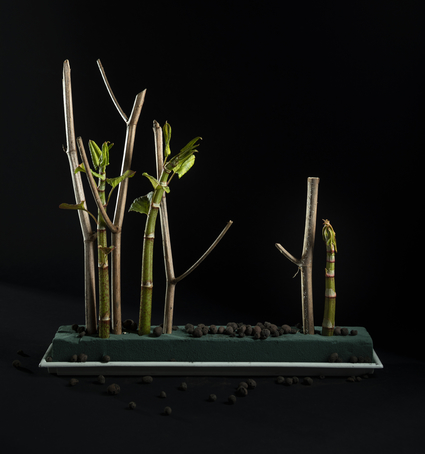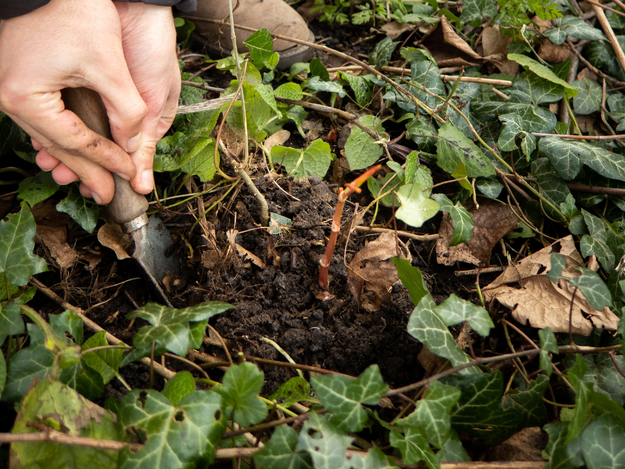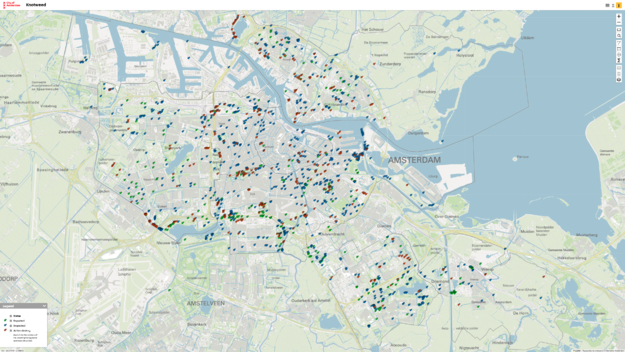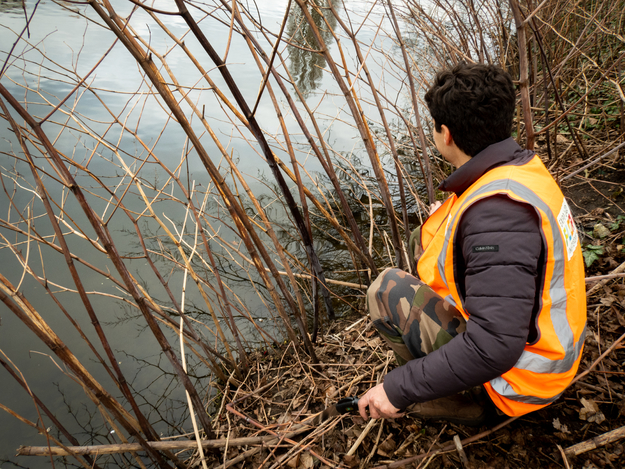Finding Japanese Knotweed
The appearance of Japanese Knotweed can vary depending on the season and which part of the knotweed you are looking at. In the spring, they can be recognised most clearly by their shovel-shaped green leaves, culms (stems) which resemble bamboo, and shoots which resemble pink asparagus. Their distinctive bamboo-like stems can reach up to 3 meters in height, and in the summer, small creamy/white flowers bloom.
When found in their natural habitat, knotweed grows in humid forests and wetlands. In cities like Amsterdam, we can find them in abandoned lots, parking lots, roadsides, alongside railroads and other seemingly forgotten places. See here a map of where to find Japanese Knotweed in Amsterdam. It's important to note that not all knotweed is safe to consume, as some areas may be contaminated by herbicides and heavy metals, you can find here what are the safe areas to harvest. If the plants look wilted or sickly, stay away.
When and how to harvest?
The best time to harvest Japanese Knotweed depends on which part of the plant you’re looking to harvest, so we have divided this harvesting guide based on different parts of the Knotweed.
Shoots and culms
Best time to harvest: The beginning of Spring (early March) to the end of summer is the best time to harvest Japanese Knotweed shoots and culms. If you are harvesting for consumption, it's recommended you harvest the young shoots when they are 30cm or smaller. The larger the shoots are, the less flesh they’ll have, and the tougher and more fibrous the skin will be. Larger shoots are better used as building materials.
How to harvest: For harvesting the shoots, you can use a knife or other gardening tools equipped with a blade such as pruners and loppers. Cut the youngest shoots off at the base, whilst more mature shoots can be sliced higher up. Like an asparagus, knotweed stems are more tender toward the tip.
Once the shoots have been harvested, make sure to place them immediately into a deep, solid bag. Make sure that no parts of the stem drop out, as knotweed can regenerate from any small fragment.
Knotweed grows very quickly (sometimes up to 20cm a day), so if the shoots are not big enough yet, you can come back in just a day or two. If you are looking for smaller shoots, but can only find ones which are already tall and leafy, make sure to look around inside the network of shoots, as often there will be younger shoots just emerging.
Caution: Knotweed can grow new roots from every knot of the plant, so when harvesting make sure to place everything you pick up immediately into a bag, and do not throw any pieces onto the ground as it can rapidly regenerate in the surrounding areas. And always harvesting from the outside in, starting with the shoots at the periphery to the shoots in the center of the plant.
Roots (rhizomes)
Best time to harvest: October and November are the best times to harvest Japanese Knotweed roots.
How to harvest: Once you have cut the shoots as close to the ground as possible, you can begin to pull up the plant’s rhizome clumps. Ensure that you get as much of the rhizomes as possible, and bag them immediately. Once the roots have been pulled out, make sure to close the hole very carefully afterwards without spreading any parts of the rhizome. Be particularly careful when transporting the rhizome clumps as well, as any piece of the root can remain dormant for up to a year and begin to sprout new plants.
Caution: Please note that you should never compost any leftovers from your Knotweed harvesting. It is recommended to bake, boil, microwave, incinerate, or otherwise denature any scraps you have from cooking to avoid the regeneration of the plant.
Flowers
Best time to harvest: The end of summer in August is the best time to harvest Japanese Knotweed flowers.
How: flowers can safely be plucked by-hand from the plant, however be careful not to drop any harvest pieces onto the ground– place them immediately into a bag. The blossoms are often visited by many insects such as bees, butterflies and beetles, so be careful not to remove too many from the plant at one time.
What to do with your harvested materials?
Discover more about what to do with your freshly harvested knotweed across our Mediamatic Knotweed blog, which includes a fermented knotweed pickle recipe and research into creating scents from knotweed.
Make sure not to miss our exciting workshops which will further explore how we can repurpose knotweed into handmade textiles, paper, and fabric dye as well!



